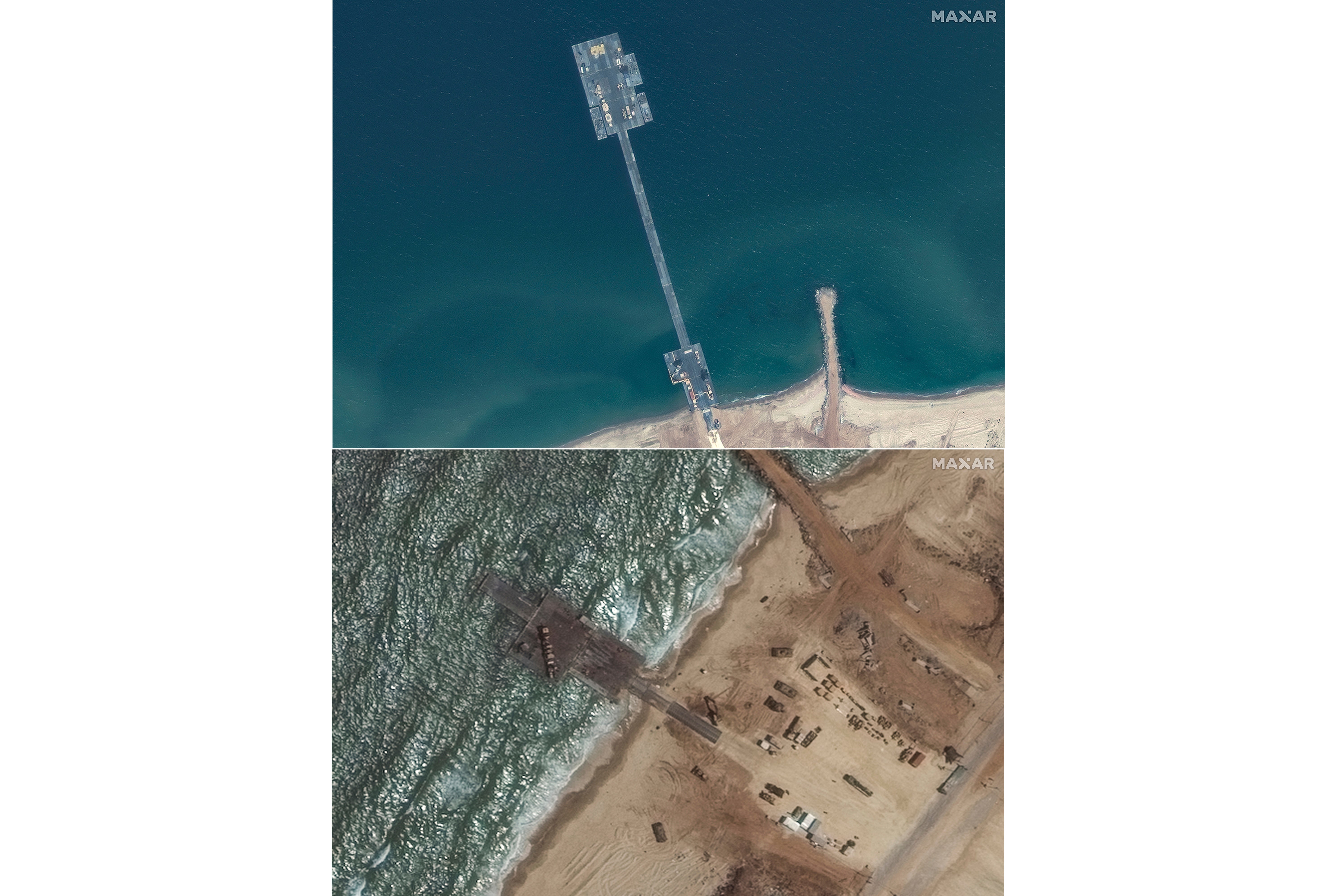US’ $320m pier in Gaza is rebuilt and officials expect aid to start arriving soon
A large section of the causeway broke apart May 25 as heavy winds and high seas hit the area
Your support helps us to tell the story
From reproductive rights to climate change to Big Tech, The Independent is on the ground when the story is developing. Whether it's investigating the financials of Elon Musk's pro-Trump PAC or producing our latest documentary, 'The A Word', which shines a light on the American women fighting for reproductive rights, we know how important it is to parse out the facts from the messaging.
At such a critical moment in US history, we need reporters on the ground. Your donation allows us to keep sending journalists to speak to both sides of the story.
The Independent is trusted by Americans across the entire political spectrum. And unlike many other quality news outlets, we choose not to lock Americans out of our reporting and analysis with paywalls. We believe quality journalism should be available to everyone, paid for by those who can afford it.
Your support makes all the difference.A key section of the $320million, US military-built pier designed to carry badly needed aid into Gaza by boat has been reconnected to the Gaza beach following storm damage repairs, and aid will begin to flow soon, US Central Command announced Friday.
The section that connects to the beach, the causeway, was rebuilt nearly two weeks after heavy storms damaged it and abruptly halted what had already been a troubled delivery route. Humanitarian aid is expected to begin moving into the enclave through the maritime route in the coming days.
A large section of the causeway broke apart May 25 as heavy winds and high seas hit the area, and four Army vessels operating there went aground, injuring three service members, including one who remains in critical condition. The damage was the latest stumbling block in what has been a persistent struggle to get food to starving Palestinians during the nearly 8-month-old Israel-Hamas war.

Bad weather had earlier slowed the delivery of sections of the pier and U.S. military personnel from Virginia to the region. And early efforts to get aid from the pier into Gaza were disrupted as residents stormed the trucks that aid agencies were using to transport the food to the warehouses for distribution.
The maritime route for a limited time had been an additional way to help get more aid into Gaza because the Israeli offensive in the southern city of Rafah has made it difficult, if not impossible at times, to get anything through land routes that are far more productive. President Joe Biden's administration has said from the start that the pier wasn’t meant to be a total solution and that any amount of aid helps.
Because of the storm damage to the causeway, large sections were disconnected and moved to the Israeli port for repairs.
Two of the U.S. Army boats went aground near Ashkelon in Israel, but those have been freed, and the other two beached onto the Gaza shoreline. Pentagon spokeswoman Sabrina Singh said those two took on a lot of water and sand and that the Israeli Navy has been helping with the repairs.
Biden, a Democrat, announced his plan for the U.S. military to build a pier during his State of the Union address in early March, and the military said it would take about 60 days to get it installed and operational. The initial cost was estimated at $320 million, but Singh said earlier this week that the price had dropped to $230 million, due to contributions from Britain and because the cost of contracting trucks and other equipment was less than expected.
It took a bit longer than the planned two months for installation, with the first trucks carrying aid for the Gaza Strip rolling down the pier on May 17. Just a day later, crowds overran a convoy of trucks as they headed into Gaza, stripping the cargo from 11 of the 16 vehicles before they reached a U.N. warehouse.
The next day, as officials altered the travel routes of the convoys, aid finally began reaching people in need. More than 1,100 tons (1,000 metric tons) of aid were delivered before the causeway broke apart in the storm, Pentagon officials said.